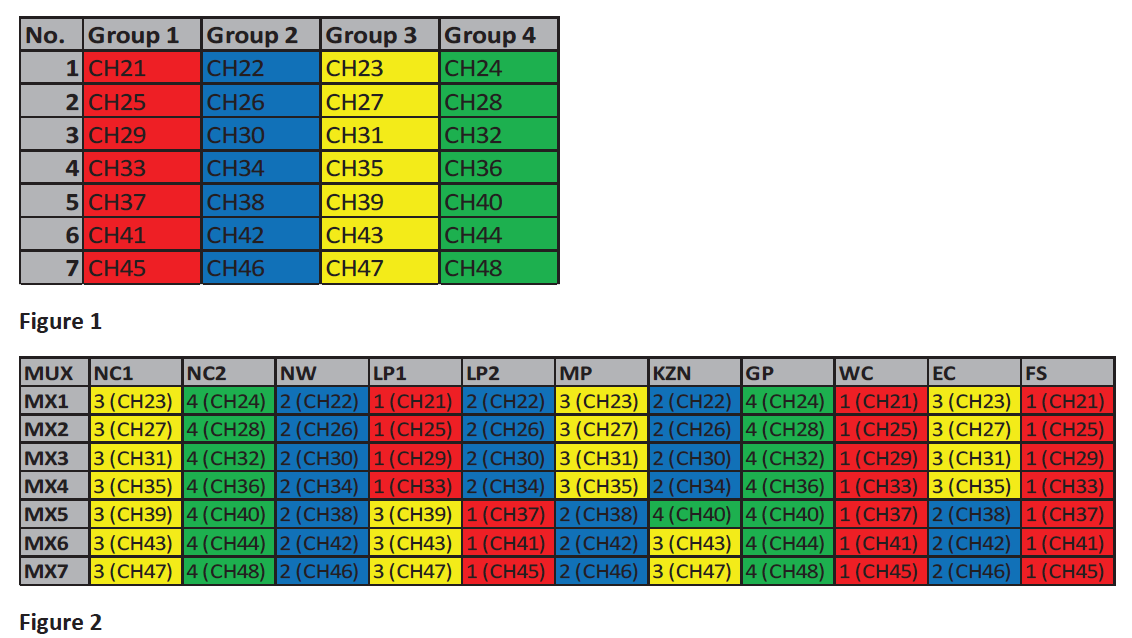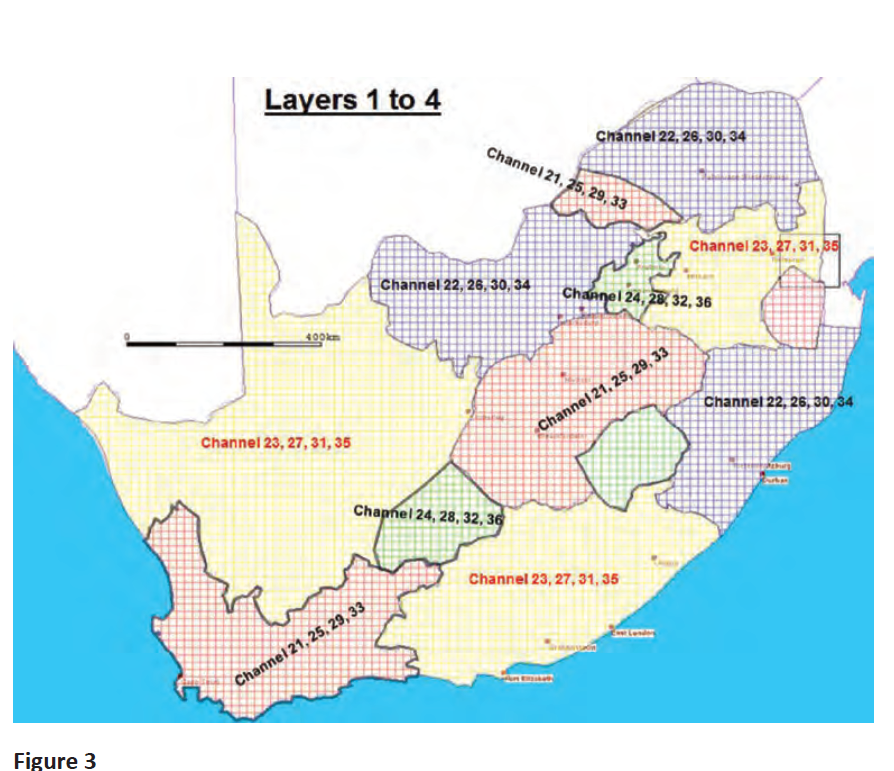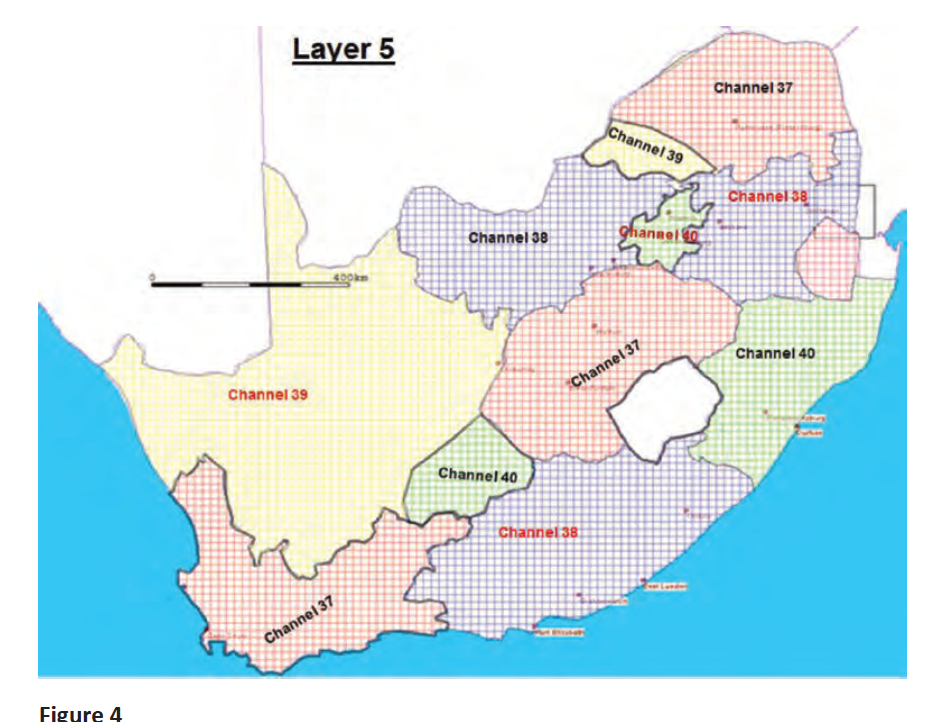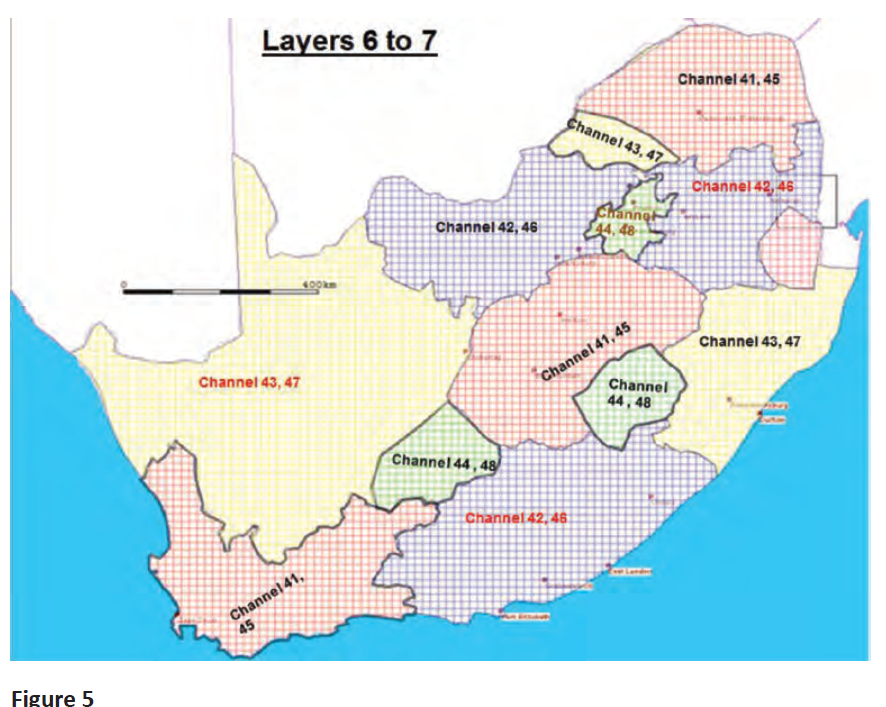 National Environmental Management Act, 1998 (107 of 1998)
National Environmental Management Act, 1998 (107 of 1998)
R 385
Electronic Communications Act, 2005 (Act No. 36 of 2005)ICASAFinal Radio Frequency Spectrum Assignment Plan for the Frequency Band 470 to 694 MHz6. Radio Frequency Spectrum Assignement Plan to clear the IMT 700 and IMT 800 spectrum of the Broadcasting Services after analogue television switch-off |
| 7.1 | The Terrestrial Television Broadcasting Frequencies as registered and Coordinated with ITU and South Africa’s six (6) neighbouring countries in accordance with the GE-06 Agreement. |
| 7.2 | Further, South Africa’s current DTT frequency plan has been registered in 2014 with the ITU Master International Register having met the conformance requirements in accordance with the Geneva 06 and having been coordinated with South Africa’s six (6) neighbouring countries. |
| 7.3 | The Terrestrial Television Plan contains 1257 frequencies for DTT implementation in the band 470 MHz to 694 MHz. |
| 7.4 | This plan is colloquially known as the seven (7) MUX plan since it provides for the deployment of seven multiplexes per transmission point in an 8 MHz channels per province as per the diagram below. |
| 7.5 | The details of the DTT Plan are contained in Annexure A and Annexure B to this RFSAP. |
| 7.6 | The Figures and maps below summarise the design of the 7 MUX plan and the multiplex group combinations in the respective provinces. |

| 7.7 | It should be noted that the frequency assignments were slightly distorted to reduce interference to broadcasting service licensees in other neighbouring countries. |
| 7.8 | The Terrestrial Television Broadcasting Plan also allowed for eSwatini (Kingdom of) and Lesotho (Kingdom of) to be included in the Digital Frequency Network (DFN) structure. In contrasts, the conventional Multi Frequency Network (MFN) frequency plan approach would have provided only a maximum of four (4) national multiplexes for South Africa. |
| 7.9 | The maps below indicate the respective SFN’s per province on a national basis and the channels that are to be used per province. Theoretically it is also possible to create a national country wide SFN which would have created 28 national SFN’s each offering an 8 MHz channel. The plan as it currently stands can be further expanded to include localised MFN services per site as and where required. |
| 7.10 | The details of the DTT Plan are contained in Annexure A and Annexure B to this RFSAP. |



| 7.11 | The current plan for Analogue Switch Off (ASO) is to launch DTT on an MFN thus compelling a second migration phase before being able to release IMT700 and IMT800 spectrum. This approach also implies an extended dual illumination phase (where analogue and digital television operational in the band 470 MHz to 860 MHz) before releasing the IMT spectrum after the second migration phase and ASO. |
| 7.12 | . |
| 7.13 | The scenario where the Guard Interval is smaller than the specified Guard Interval will lead to selfinterference in the network. This RFSAP therefore emphasise that the transmission parameters must comply with the above specified transmission configuration. This is to ensure the envisaged optimised implementation of the DTT Plan in Annexure A and Annexure B is realised within the envisage immediate implementation. |